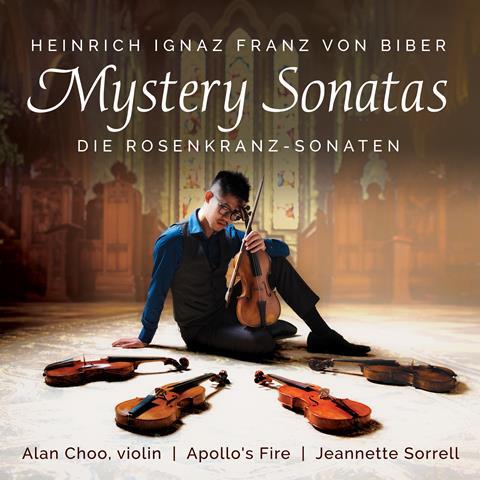An attention to both detail and architecture impresses

The Strad Issue: May 2024
Description: An attention to both detail and architecture impresses
Musicians: Alan Choo (violin) Apollo’s Fire/Jeanette Sorrell (harpsichord)
Works: Biber: Rosary Sonatas
Catalogue number: AVIE AV2656 (2 CDS)
In order to gain stability of string tensions and tuning for Biber’s scordature, Alan Choo employs six violins in these recordings, captured over eleven days in five periods between September 2022 and May 2023. He demonstrates commendable technical bravura in realising effectively Biber’s unique musical language and offers expressive, dramatic accounts of these sonatas, which, divided into three cycles each of five ‘mysteries’, vividly depict key events in the lives of Mary and Christ. He shapes phrases gracefully, as in no.3’s reflective Adagio, and gives a compelling sense of architecture to movements such as no.4’s Ciacona, no.11’s ‘Surrexit Christus hodie’ and the final unaccompanied Passacaglia (no.16).
His extempore ornamentation is tastefully done, and he varies repeated sections with imagination and dexterity, and uses dynamic contrast and subtleties of articulation, rubato and timing to enhance the theatricality of his interpretations. Sensitivity to programmatic elements is especially demonstrated in the opening Sonata movements of nos.3, 9 and 13, no.6’s Lamento, no.7’s Sarabanda and the Praeludium of nos.1 and 10.
Read: Peg-turning masterpieces: Heinrich Biber Baroque Scordatura
Watch: The English Concert at Kings Place | Biber’s Rosary Sonatas
Review: Amandine Beyer: Biber
The drama is intensified by lavish accompanying forces, which, though rarely used en masse, are judiciously employed in various combinations to assist in relating each event. Some may consider a step too far the Hollywoodesque drums in no.12’s Aria Tubicinum; and such instrumental richesse also results in occasional textural heaviness, positive when driving exuberant dance-inspired movements but negative when highlighting Choo’s mildly wearisome marking of the beat, particularly in passages involving tied notes. But these are minor cavils about otherwise deeply moving musical meditations, closely, yet cleanly recorded with ample spatial resonance.
ROBIN STOWELL



































No comments yet